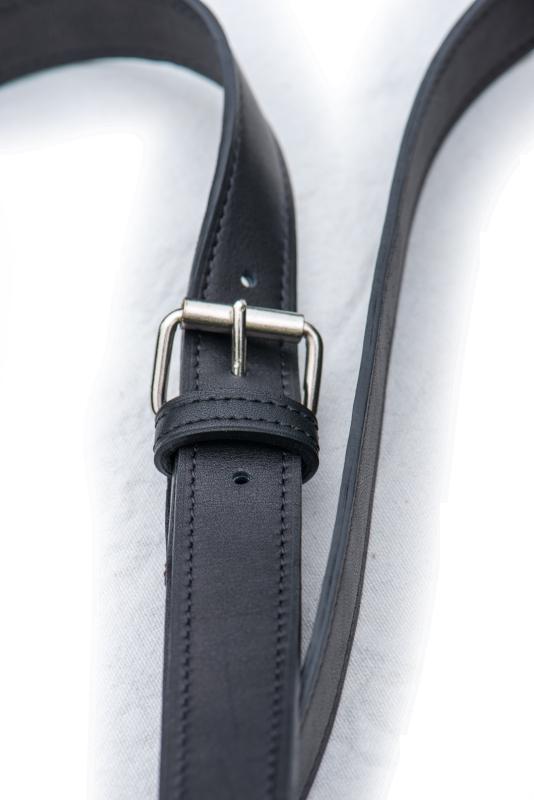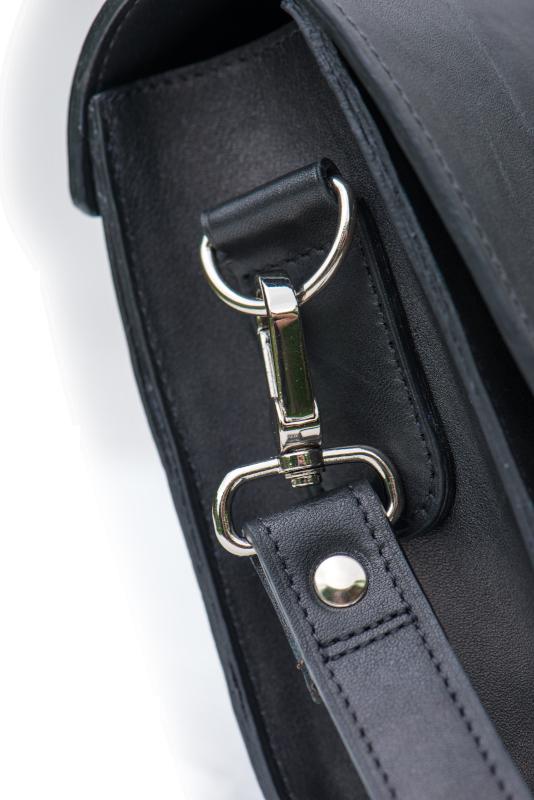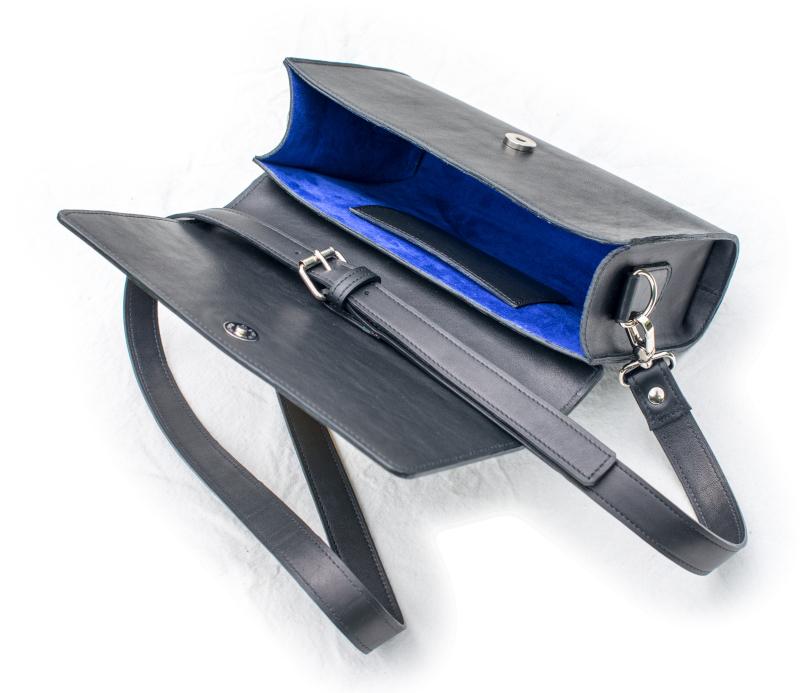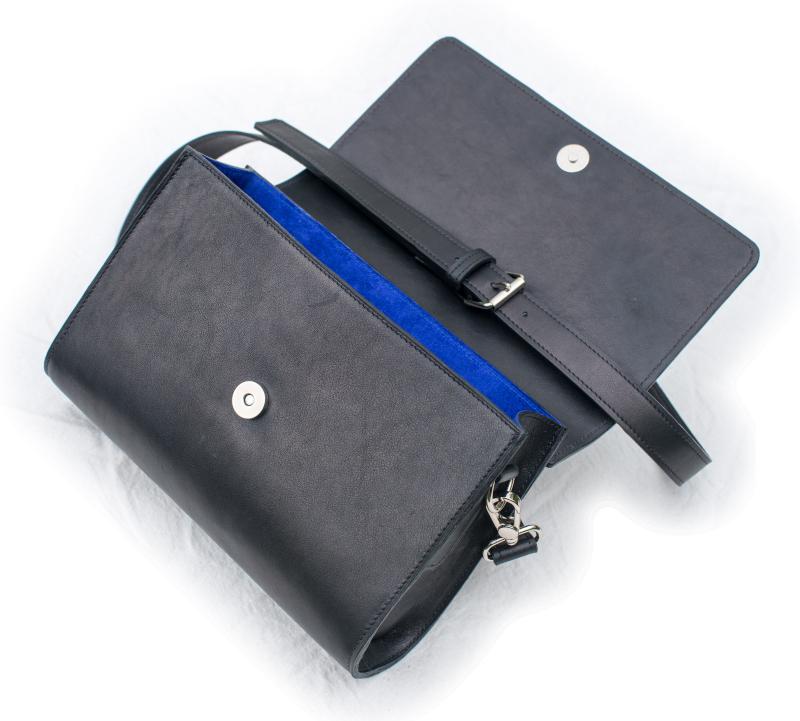
Digit
Contributing Member-
Posts
109 -
Joined
-
Last visited
Content Type
Profiles
Forums
Events
Blogs
Gallery
Everything posted by Digit
-
That's a wonderful jacket. I hope I'll be able to make something like that some day. Does it only have snaps for closing or is there a zipper underneath as well?
-
help choosing first leather sewing machine
Digit replied to TakashiOkada's topic in Leather Sewing Machines
Ah yes indeed. My cursory glance failed to notice the white lever on white background -
help choosing first leather sewing machine
Digit replied to TakashiOkada's topic in Leather Sewing Machines
I don't see a reverse lever on that machine. It might be a button inside that dial, I'm not sure. Make sure that the machine you buy has a reverse (you can work without, but it's way more easier if your machine can reverse stitch). -
I never used this kind of tool, but the way I'd use it would probably be approaching the bell from the top with the pin of the tool downwards, just to the left of the cutting edge. It would require a certain amount of precision to get the angle just right. It's the amount of precicion an experienced user would have, but not me, so I'll rely on the built-in sharpening wheel, which is always at the right angle. The built-in wheel has allowed me to sharpen the the bell knife so that I could skive down 0.8mm (2 oz) super-supple nappa leather to half thickness. That's all the sharpness I need. If your skiver stops spinning when the sharpening stone hits it, I suggest checking the belt tensions in the machine; they might be worn and slipping.
-
help choosing first leather sewing machine
Digit replied to TakashiOkada's topic in Leather Sewing Machines
That Typical TW3-P335 looks exactly like the Global WF1335. Probably from the same OEM factory but differently branded. It's a good basic machine to get started on. Be sure to have it on a removable table so that you have room to manipulate larger work underneath the arm. Depending on which leather you'd want to stitch, have some spare feet at the ready without knurls/teeth that might leave patterns on your leather (or simply put some tape over the knurls, that's what I do). I never mentioned ideal. You need some starting point and it's best you learn to work with what's available in your market and what's affordable to you. Experience will guide you to a better machine (or not if the machine you buy does cover your needs in the end). I learned a lot about cars by buying five cheap ones over the past 15 years and working on them to keep them running, while I could have borrowed money to buy a single shiny 'ideal' car and just drive it and never learn anything... -
In the period I signed up to this forum there was talk of some hack or something and everything needing to be set up from scratch and a backup restored. That might have done something to the permissions. I noticed that I had access to the NSFW area without needing to ask for it. Although that section isn't as active anymore as it used to be in the past (have people become more prudish in recent years?), it still contains a wealth of inspiration and tips for those interested. There have been half a dozen NSFW posts in the past few years or so. Compared to the endless stream of gun holsters, knife sheaths, and people with sewing machine problems I don't think the forum is at risk of degenerating into an obscenity pit just yet. Also: obscenity is in the eye (and mind) of the beholder. To relativize the mentioned post: I believe most people wear underwear. Some is made from plants (cotton), other is made from prehistoric micro-organisms (synthetics). So what could be the problem with someone showing underwear made from current macro-organisms (animal skin)? I hope Johanna can get that permission issue resolved so that those not interested in certain aspects of leatherwork can live peacefully ever after.
-
There's a huge reduction ratio on that left-right adjustment of the bell and the first dozen turns or so just absorb the slack when you switch from adjusting in one direction to the other.
-
help choosing first leather sewing machine
Digit replied to TakashiOkada's topic in Leather Sewing Machines
That's exactly what we're doing at school and for that you need a cylinder arm triple transport machine. We use Global WF1335 machines at school and I bought a second hand Adler 69. Both have a pretty basic triple transport system (bottom transport is just a back-and-forth moving plate) but they're up to the job so far. -
What I usually do when stuff gets spread over pages or when software doesn't want to spread over pages is to print everything to a huge, single-page PDF and then print that PDF; either scaling it down to one physical page or poster-print to multiple pages. Depending on how Inkscape prints, you may even keep the PDF vectorized so you can scale as much as you want afterwards without losing precision.
-
Help Needed:About wiping the glue and edge paint
Digit replied to kellyswanson's topic in How Do I Do That?
I use a metal satay skewer for applying edge paint and some people from my class use bits of TIG welding rod. Both are around 1-2mm in diameter. It's slow work, but by applying paint this way (drip-by-drip basically) gives you a fine control over the amount of paint you apply and prevents excess from going over the edge and smearing the grain side. Glue I have never yet applied in such a way that it could get on the wrong side of the leather I'm working with. I think it's mostly a matter of keeping your work patch and your hands clean when dealing with glue. For contact cement I use a plastic spatula to apply small amounts (CA is for setting pieces before stitching imo, so you only need small amounts) and for PVA I usually use a large spatula (an old credit card) or a brush to apply it. -
Thank you. I did the handbag entirely on the school's Globals and some parts of the belt on my Adler. Both machines are pretty similar; I guess I could have done the gussets equally well on the Adler. Thanks. The pattern is one from school as this was a mandatory project. Leather is all chrome tan, cow outer and pigskin suede liner, reinforcement with salpa. Hardware is two D-rings, two carabiners, three rivets and a buckle.
-
Given the title of the item and the overall build quality observed from the photos (off-the-shelf components and threaded rods put together) this looks like a Chinese build that you can find on Ali for less than a hundred, including shipping: https://www.aliexpress.com/item/1005003790489160.html Always beware of drop-shippers with fancy websites that charge a margin of 100% or more. I'm not saying that this website is one; I have no experience with them. But I do suggest you look around a bit and compare prices.
-
Thank you This is all machine stitched on the Global 1335's at school and a few bits on my own Adler 69 at home.
-
Zipper tabs on a pouch, why might one make a "split" zipper tab?
Digit replied to AEBL's topic in Sewing Leather
You do indeed get a longer opening that way. The downside is that the bag doesn't fully close and the tickness of the leather might push away the zipper puller, potentially making the opening even bigger. Maybe it's a workaround for not having the correct zipper length to match the bag dimension (or vice-versa: miscalculated bag size based on the zipper at hand). -
1-2 oz corresponds with 0.4-0.8mm if I'm correct. Last week I've skived down 0.7-0.9mm nappa to about half, so it's definitely doable with a bell skiver. I's very thin though; the leather will get stretchy and if you need to thin down a wide strip, you'll need multiple passes through the skiver and you risk making holes. Make sure you work with a properly sharpened blade.
-
My first go-to is usually https://www.lederhuis.com/ in Germany, they have a large assortment of hardware and tools.
-
Yesterday I finished my first handbag. It was the last assignment at school this year and I look forward to next year's projects. It's made from black chrome tan cowhide and blue pigskin suede liner. Reinforcement of the body and closing flap with 0.4mm salpa; the leather carrying strap is reinforced with a textile anti-stretch tape.
-
Europe is a big place and there are lots of suppliers. Do you have a favourite country? Most of the shops I order with I found by googling though.
-
I use PVC sewer pipe (11 or 12.5 cm ~ 4 1/3" or 5") with end caps (one end fixed, one end with a screw cap). They come in 3m lengths and I cut them into two pieces of 1.5m (5'), which perfectly fits a half hide. I stow them away near the ceiling of my garden shed; that's the only place where I have some space left This is an old photo; there's six or seven pipes hanging there by now
-
For closure you could add a button stud. The closing flap looks a bit rough and unfinished to me, but that's a matter of personal preference. I would suggest to do smaller cuts on the roundings so you don't end up with a sequence of straight cuts in the curves. As for giving the bag more volume, you can try the suggestion made by @toxo or you could vary in leather ticknesses: thinner/more supple leather for the gusset and thicker/sturdier leather (or reinforced leather) for the font and back panels. With thinner gusset leather it will fold closer to the stitching line instead of having a gradual curve over the width of the gusset. And sturdier leather on front and back panels will make them resist curving inwards.
-
Adler 68NT Seized - Any assistance/advice gladly welcomed
Digit replied to Ian B's topic in Leather Sewing Machines
I think you'll have to go through a distributor for that. Start with the UK importers at https://www.duerkopp-adler.com/contact/sales-partners/europe/#c4133 and also search for (or ask them) if there are smaller resellers that could help you out. In Belgium there are a few businesses selling industrial sewing machines that have access to parts but I found those by googling and word of mouth; they aren't listed by Adler as reseller. -
Adler 68NT Seized - Any assistance/advice gladly welcomed
Digit replied to Ian B's topic in Leather Sewing Machines
This sliding sleeve is component 068000180, yes? According to the schema there's also part 990420055 nearby: a cotton wick. Probably that wick was supposed to deliver lubrication for the sliding action. If the machine ran dry and heated up, this wick might have burnt and thrown soot around. If so you'll probably need to change the wick and carefully clean up all charred residues. -
Adler 68NT Seized - Any assistance/advice gladly welcomed
Digit replied to Ian B's topic in Leather Sewing Machines
Could it be that the whole blue-green-red assembly is only held in place with the blue bolt? From what I understand from your explanation there should only be vertical motion, not lateral; so one bolt at one end of the assembly could be sufficient to hold everything in place. It's slotted at least, so you could try to loosen it and see if you can wiggle that assembly about. -
Yesterday I joined the Ghent edition of the Distinguished Gentleman's Ride and for the occasion I wanted to dress up a bit, so the day before a made myself a bow tie. Red sheepskin for the bow and black cow for the collar, both chrome tan. Edges skived and folded over and the collar received an edge stitching all around. Closure with two black 9mm s-type snaps.






